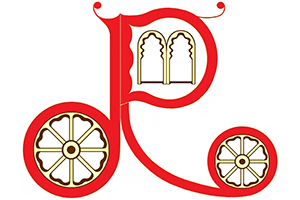A VIBRANT METROPOLIS AND EPICENTER OF BRITISH CULTURE; LONDON & CASTLES, ENGLAND
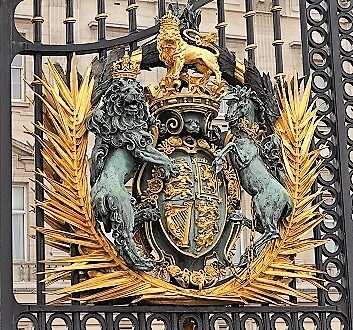
England, London, Royal Coat of Arms at Buckingham Palace
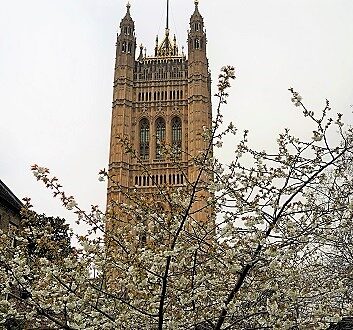
England, London, Victoria Tower
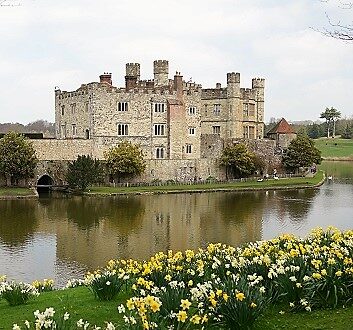
England, Leeds Castle
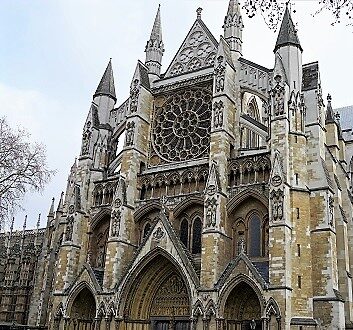
England, London, Westminster Abbey
Travel Itinerary
Day 1 – Arrive London, England
There are direct flights to/from London, England from major cities of USA, including New York, Newark, Atlanta, Miami, Houston, Chicago, Las Vegas, Los Angeles, San Francisco and Seattle. At Heathrow Airport, the most efficient transfer services are the classic black taxi or pre-booked private chauffeur services. The journey from Heathrow Airport to the hotel in Central London takes approximately an hour depending on the traffic. We arrive at the hotel before noon and have lunch. In the afternoon, we take a tour of the Royal Opera House (near the Holborn Underground Station) and explore the Convent Garden district with plentiful shops and cafes. Afterward, we return to our hotel (near the Marble Arch Underground Station).
Note: Our London & Castles, England Itinerary takes place during the spring. London in the spring offers favorable hotel prices, fewer tourists, plentiful sunshine but at times cloudy days. The State Rooms at Buckingham Palace are open to the public during a limited period in the summer. London has an excellent public transport network, including the London Underground (also called the Tube) that connects Greater London. A Private Chauffeur Service is a flexible transportation alternative. London’s attractions are very popular, hence we recommend booking/purchasing tickets through the hotel concierge once in London.
Day 2 – Tower of London, Tower Bridge, British Museum
We arrive at the Tower of London during opening hours (5 minutes’ walk from the Tower Hill Underground Station). Visitors can take a multi-hour guided tour or use multimedia guides. The visitor route guides us through the royal residence, including the Wakefield Tower and the Lanthorn Tower. We visit the White Tower, the Chapel of St. John and the Royal Armouries. We continue to the Waterloo Barracks that houses the Crown Jewels of the British monarchy. Afterward, we walk through the Traitors’ Gate outside the ramparts toward the Thames River and the Tower Bridge. The nearby Smith’s Wapping Restaurant serves excellent seafood for lunch. After lunch, we explore the Tower Bridge’s walkway at 42 meters above the River Thames, then tour the Engine Rooms at the base of the bridge. Afterward, we head out to the British Museum (6 minutes’ walk from the Tottenham Court Road Underground Station). We spend multiple hours exploring the museum’s collection of art and artefacts. Our dinner at Hakkasan Hanway (within 10 minutes’ walk from the museum) includes decadent Cantonese dishes. After dinner, we return to our hotel (The Tottenham Court Road Underground Station to the Marble Arch Underground Station).
Day 3 – Parliament, Westminster Abbey, Churchill War Rooms, St. James Park
In the morning, we walk on the Westminster Bridge that offers great views of the Westminster Palace. We arrive at the Westminster Palace during opening hours (near the Westminster Underground Station). The visitor route guides us to Westminster Hall and St. Stephen’s Hall. We proceed to the Central Lobby in the middle of the Parliament complex and visit the Houses of Parliament. Afterward, we walk through Parliament Square toward nearby Westminster Abbey. The Westminster Abbey includes the Royal Tombs, the Lady Chapel, the 13th century Westminster Retable and the beautiful Abbey Gardens. Situated near the abbey, the Supreme Court of the United Kingdom warrants a guided tour. We have lunch at the Chez Antoinette, a lovely French restaurant located behind Victoria Street, within a 10 minutes’ walking distance. In the afternoon, we walk 10 minutes to the Churchill War Rooms to take a scheduled tour of the underground complex used by Winston Churchill during the Second World War. Afterward, we spend time at the nearby St. James Park and then have dinner at the Donastia, an excellent Spanish restaurant (5 minutes’ walking distance from the Marble Arch Underground Station). After dinner, we walk a few minutes to our hotel.
Day 4 – Buckingham Palace, Royal Mews, Kensington Palace & Gardens
We arrive at Buckingham Palace, the official residence of Queen Elizabeth II (within a short walking distance from Victoria Underground Station or St. James Underground Station). At the front of Buckingham Palace stands the Queen Victoria Memorial. Outside Buckingham Palace, we observe the Changing the Guard, a formal ceremony performed by the Queen’s guards. Note: The State Rooms at Buckingham Palace are open to the public during the summer while the Royal Family is away. We walk a few minutes to the Royal Mews at Buckingham Palace, the working stables with a collection of royal coaches. We have lunch at the nearby Santini Restaurant, serving refreshing antipasti dishes. Afterward, we walk through Hyde Park, featuring the Rose Garden and the Diana Memorial Fountain. Hyde Park is connected to the Kensington Gardens, the location of the Albert Memorial dedicated to Queen Victoria’s husband. We arrive at Kensington Palace and take a guided tour of the State Apartments. We walk outside to the Sunken Garden, a beautiful terraced garden. We have diner at Noura, a Lebanese restaurant near Buckingham Palace (The High Street Kensington Station to the Victoria Underground Station). Later, we take the London Underground to the Marble Arch Underground Station and walk back to our hotel.
Day 5 – Windsor Castle
Our day trip includes visiting the quaint town of Windsor and Windsor Castle. We take a few minutes’ taxi to the Paddington Railway Station and take a train to the Windsor & Eton Central Station (approximately one hour trip). Upon our arrival, we walk 10 minutes to Windsor Castle, the official residence of the British Royal Family. A visitor route guides us through the lavish State Apartments, Queen Mary’s Dolls’ House and St. George’s Chapel. The multimedia guides offer a journey through the St. George’s Chapel’s history and architecture. We discover the surrounding Great Park and the Long Walk, a long tree-lined avenue that overlooks Windsor Castle. The nearby town of Windsor has charming boutiques and restaurants. The Gilbey’s Restaurant Eaton, Windsor is a great British bistro for lunch (between 12:00-3:00PM). Late afternoon, we take the train back to the London Paddington Railway Station, and then a taxi to New Bond Street, a premier shopping street with high-end boutiques and elegant stores. A short walk away, Le Gavroche Restaurant serves superb French haute cuisine for dinner. After dinner, we walk a few minutes back to our hotel.
Day 6 – Blenheim Palace & Gardens
A group day tour with Evan Evans Tours explores the Village of Bampton, the Cotswolds, Bourton-on-the-Water and the Blenheim Palace. In the morning, we take a taxi to the Victoria Coach Station to begin a few hours’ journey through the English countryside, discovering the farmlands, woodlands, villages and palaces. We admire the stone houses of the Bourton-on-the-Water village. The Blenheim Palace is surrounded by 2000 acres of Parkland and Gardens. The gilded State Rooms include the remarkable Great Hall and the Long Library. The palace’s manicured gardens have pretty pathways, lakes, fountains and flowers. After the visit, we return to London and have dinner in our hotel.
Days 7 – Leeds Castle
We organize a private transfer (assisted by our hotel’s concierge) to Leeds Castle, a privately owned castle and museum. In the morning, we drive over an hour to the medieval castle in South East England. Leeds Castle is set on two small islands in a picturesque lake and encircled by vast parkland. We tour the castle’s elegant apartments, visit the gardens and observe the diverse wildlife. The Castle View Restaurant is a lovely dining venue with superb views. Afterward, we drive back to London. A relaxing evening includes dinner in our hotel.
Day 8 – London, England Departure
In the morning, we use private transfer services to Heathrow Airport and take our international flight home.
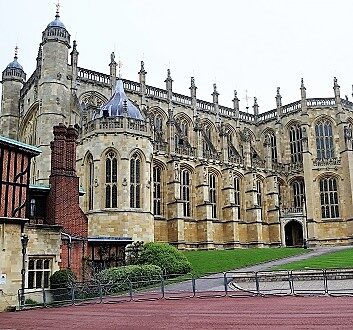
England, Windsor Castle, Saint George's Chapel
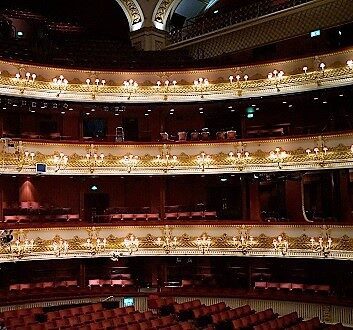
England, London, Royal Opera House
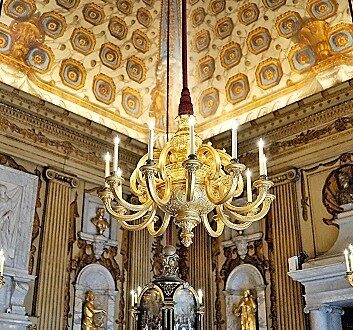
England, London, Kensington Palace, King's Cupola Room
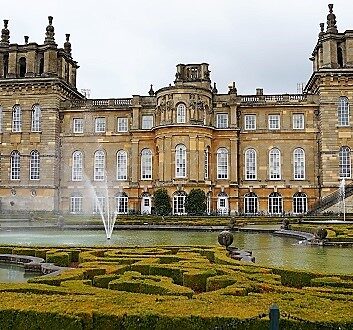
England, London, Blenheim Palace
Special Places
London – The United Kingdom of Great Britain and Northern Ireland is bordered by the North Sea to the east, the English Channel to the south, the Celtic Sea to the south-west and the Irish Sea and Atlantic Ocean to the west. The United Kingdom, a sovereign state in Western Europe, includes four countries in the British Isles: England, Scotland, Wales and Northern Ireland, plus the British overseas territories. The largest of the British Isles is Great Britain, a landmass that incorporates England, Scotland and Wales. England is the largest country in the UK and occupies a large portion of Great Britain. The United Kingdom is a constitutional monarchy with the reigning monarch Queen Elizabeth II as the head of state, with the Parliament and the government in charge of making political decisions. London, the capital of England and the UK, is set on the River Thames in southeastern England. London, originally founded by the Ancient Romans as a port and trading center, evolved into a vibrant metropolis. A multitude of historical landmarks, majestic Royal Palaces, beautiful Royal Parks and artistic heritage is best explored by foot, occasionally aided by the London Underground or a Private Chauffeur Service. Note: The Oyster Card, a payment method for public transportation in London, can be pre-loaded with payment to streamline travel in London. The London Eye, situated along the River Thames, is a cantilevered observation wheel offering panoramic views of London. The Royal Opera House, a performing arts venue, can be explored by attending a performance or taking a guided tour. Trafalgar Square, established in the 19th century, showcases sculptures, statues and historic buildings. 10 Downing Street is the official residence and office of the Prime Minister of the UK. The Supreme Court of the United Kingdom, housed in an impressive building designed by Scottish architect James Gibson and built in 1913, offers guided tours that shall be booked in advance. St. James Park has a picturesque lake, grasslands, trees and shrubberies and serves as a habitat for a diverse wildlife. The Duck Island, located on the east side of the park, houses the resident colony of white pelicans that were given to Charles II by the Russian Ambassador in 1664. Hyde Park, the largest Royal Park in central London, includes the Diana Memorial Fountain and a beautiful Rose Garden. The West Carriage Drive runs through the park and crosses over the Serpentine Lake, connecting Hyde Park to the Kensington Gardens. London is a fantastic city with iconic and charming neighborhoods, and a perfect base to explore the surrounding English countryside.
Tower of London & Tower Bridge – The Tower of London, a historical landmark of London, is a royal residence and fortress, built as part of the defense system during the times of the Norman monarchy in Britain. The Tower of London, founded by William the Conqueror, was strategically built to control and protect the access to London from the River Thames. Inside the Tower of London, a visitor route and multimedia guides educate visitors about its fascinating history. The Wakefield Tower, built in 1220 by order of King Henry III, served as the king’s apartments, while the Lanthorn Tower served as the queen’s apartments. The circular shaped Salt Tower was used to hold important prisoners in its dungeon, located in the basement. The White Tower, the oldest part of the Tower of London complex, was designed as a Norman fortress surrounded by massive ramparts. The White Tower museum and the Royal Armouries house an impressive collection of weaponry, armour, and royal objects and gifts. Inside the White Tower, the Chapel of St. John was used for prayer by the royals. The White Tower is also the location where two young sons of King Edward IV were murdered by their uncle. The Waterloo Barracks, built by the Duke of Wellington who won the Battle of the Waterloo against Napoléon, houses the precious coronation regalia, known as the Crown Jewels of the British monarchy. The Fusilier Museum, situated in the Old Officer’s Quarters building, displays the artifacts of the Royal Regiment. The Traitors’ Gate leads outside the ramparts, offering panoramic views of the Thames River and the iconic Tower Bridge. A few minutes’ walk along the Thames River leads to the Tower Bridge, a suspension and bascule bridge that opened in 1894. Since then and until the 1960s, it played an important role in managing the continuous riverside traffic used to transport commercial goods to the riverside warehouses along the River Thames. In the middle of the bridge, the ticket office is an entryway to the high-level walkways, offering the views through the Glass Floor, 42 meters above the River Thames. The Engine Rooms, situated at the base of the bridge, have an interesting exhibition that tells stories about the people who maintained the bridge and summarizes functional changes from steam to electricity, resulting in the modernization of the bridge. Note: In the evening, the Ceremony of the Keys takes place in the Tower of London. It is a reenactment of the 700-year old ceremony of locking up the Tower of London. Tickets need to be purchased months in advance for this popular event (this event is on our list to do during our next visit).
Westminster Palace – A walk on the Bridge Street leads to the Westminster Bridge, offering wonderful views of the Houses of Parliament and the Elizabeth Tower, known also as Big Ben. Westminster Palace, a former royal residence, became the permanent base for the Houses of Parliament in 1512. The King William Rufus ordered the construction of Westminster Hall. The Master builders designed Westminster Hall with its massive stone walls, awe-inspiring hammer-beam roof and beautiful stained-glass window. This magnificent hall was used for the regal coronations, as well as for the Christmas and Easter festivities. For 700 years, Westminster Hall was the center of the English legal system, a place where legal trials were held. Next to Westminster Hall, St. Stephen’s Chapel became the meeting center for the House of Commons until 1834. Visitors may only take photos inside Westminster Hall and St. Stephen’s Hall. St. Stephen’s Hall is decorated with statues of important parliamentarians, beautiful mosaics at the each end of the hall and stained glass windows. A visitor route and multimedia guides lead visitors to the Central Lobby decorated with statues and mosaics and situated in the middle of the Parliament complex. We visit the meeting places of the two Houses of Parliament in the UK: the House of Lords and the House of Commons. The stately Lords Chamber displays the royal throne, ceiling panels presenting ancient emblems, historic statues, stained glass windows and red furniture. The Commons Chamber shows a subdued Gothic interior décor, emphasizing the green colored benches. The visit to the Houses of Parliament leaves a lasting impression. It is here that every year in May, the Queen of England with the presence of the House of Lords and the House of Commons formally opens the parliament. Note: During selected days throughout the year, there are tours of the Houses of Parliament combined with an Afternoon Tea served in the hall overlooking the River Thames.
Westminster Abbey – A walk through Parliament Square shows the Statue of Winston Churchill in the middle and the nearby magnificent structure of Westminster Abbey. Since 1066, England’s royal coronations and weddings took place in Westminster Abbey. Inside the abbey, there are Royal Tombs that serve as the resting place for England’s kings and queens. The Medieval structure of the Lady Chapel displays an impressive fan-vaulted ceiling and stained glass windows. The Westminster Retable is a 13th century altarpiece, depicting religious symbols on painted panels. A visit to Abbey Gardens reveals a peaceful courtyard with trees and blooming flowers.
Museums – A visit to London is not complete without exploring its incredible museums. The Churchill War Rooms, situated in London’s Westminster district, served as a secret underground center used by Winston Churchill and his war cabinet to lead the war effort during the Second World War. The complex includes corridors, war rooms and accommodations used by Winston Churchill, his family and his staff. An exhibition hall offers a digital access to the comprehensive historical material. Note: Visitors to the Churchill War Rooms should purchase tickets in advance, especially during the summer season. The British Museum, situated in the Bloomsbury district, houses an incredible collection of art and artefacts. The museum was founded in 1753 by the physician Sir Hans Sloane and grew into an enormous repository of world history, culture and art. The world-famous Rosetta Stone is the only remaining piece of larger stone, showing inscriptions in different languages dating back to March 27, 196 BC. The extensive collection of Egyptian objects, such as mummies, sculptures and tombs attracts visitors from all parts of the world. The British Museum merits allocating countless hours to explore its magnificent treasures. The Natural History Museum is a science research center that houses an impressive collection of over 80 million specimens from different parts of natural history. An expansive and beautiful central hall with vaulted ceiling welcomes the visitors to the museum. The Natural History Museum celebrates and preserves the significant scientific discoveries collected throughout history. The museum’s exhibitions, artwork and publications are invaluable, educational and inspirational.
Buckingham Palace and Gardens – Buckingham Palace, situated in the Westminster borough, is the administrative headquarters and official residence of Queen Elizabeth II, the current monarch of the United Kingdom. The original Buckingham House was built for the Duke of Buckingham in 1705, was bought in 1761 by King George III and became the official royal residence of Queen Victoria in 1837. The Queen Victoria and Prince Albert were the first royals to greet the crowds from the balcony during special celebrations. Outside Buckingham Palace, Changing the Guard, also known as Guard Mounting, is a formal ceremony where guards hand over the responsibility of protecting the palace to new guards. The Queen’s guards dressed in red tunics and black bearskin caps march to Buckingham Palace to take their posts. Note: The official website of Buckingham Palace shows the regularly updated schedule for this formal ceremony. The palace is surrounded by ornate iron gates, featuring the Royal Coat of Arms with a lion symbolizing England and a unicorn symbolizing Scotland. Inside the palace, the impressive Grand Staircase is decorated with historic paintings of the Royal Family and leads to the royal chambers. Note: The State Rooms at Buckingham Palace are open to the public during the summer while the Royal Family is away. The Throne Room, designed with a canopy over the throne chairs, is used during formal royal ceremonies. Completed in 1855, the Ballroom is an immense room used for formal banquets and festivities. The White Drawing Room, a stunning royal reception room, features classic French and English furniture. Art lovers shall visit the Picture Gallery with its collection of royal paintings. A walk outside in the rear of the palace reveals the Buckingham Palace Garden. This expansive garden with a picturesque lake, grasslands, flowers, trees and artwork is a beautiful setting for the Queen’s Garden Party. At the front of Buckingham Palace stands the Queen Victoria Memorial, an imposing monument dedicated to Queen Victoria.
Kensington Palace and Gardens – Kensington Gardens serve as a beautiful setting for the Kensington Palace. The expansive gardens overlook the red brick palace structure with the statue of Queen Victoria in the front. Kensington Palace, originally a mansion called Nottingham House, became a royal residence in 1689. Inside the palace, the visitor route guides through a series of chambers, such as Stone Hall, the Victoria Revealed Exhibition, the King’s State Apartments and Queen’s State Apartments. Kensington Palace has separate private chambers occupied by the members of the Royal Family; which are not open to the public. The King’s State Apartments, created in the 18th century for the King George I and George II, include the King’s Staircase decorated with a vivid artwork. The King’s Gallery displays painted ceiling canvases, red damask covering the walls and a marble chimney. The Cupola Room stands out with its luxurious décor and beautiful ceiling. The Presence Chamber was used by the King to welcome ministers, foreign ambassadors and other dignitaries. A visit to the Queen’s State Rooms, including the Queen’s Bedchamber and the Drawing Room, reveals colorfully decorated chambers. An exhibition dedicated to the Princess of Wales, showcases Princess Diana’s formal gowns and stylish wardrobe. The Red Saloon is the location where the new Queen Victoria held the first Privy Council in 1837. Outside the palace, the Kensington Gardens are 275 acres of land with avenues lined with trees, picturesque ponds, grasslands, playgrounds and a statue of Peter Pan. The tranquil Sunken Garden, first planted in 1908, is a beautiful terraced garden with a flower display that is modified every season. The Albert Memorial near the Royal Albert Hall is an ornate monument dedicated to Queen Victoria’s husband, Prince Albert. The Italian Gardens, situated near the Lancaster Gate in Kensington Gardens, have a pretty layout with basins, statues and fountains. The West Carriage Drive runs through the park and crosses over the Serpentine Lake, connecting Kensington Gardens to Hyde Park.
Windsor Castle – An hour drive west from London, the quaint town of Windsor is situated on the south bank of the Thames River. On the north bank of the river, the tiny town of Eton has a picturesque setting. Windsor Castle, the official residence of the British Royal Family, dominates the landscape. The castle is often used for ceremonies and state visits with foreign dignitaries. The visitors to Windsor Castle may tour the State Apartments, Queen Mary’s Dolls’ House, St. George’s Chapel and the expansive castle grounds. The State Apartments hold the treasures of the Royal Collection. A visitor route guides us through the lavish halls and chambers. The Grand Reception Room is decorated with beautiful chandeliers and a Malachite Urn that survived a fire. The Queen Mary’s Dolls’ House displays a miniature replica of the aristocratic mansion, designed by the best designers and artists. St. George’s Chapel, designed in Gothic style, is part of the religious order established by King Edward III in 1348, the Order of Garter that is a prestigious order of chivalry. The members of the order are the Queen, the Prince of Wales and 24 Knights. The multimedia guides offer a journey through the chapel’s history and architecture. The chapel’s interiors display an impressive décor, featuring a fan vaulted ceiling, the medieval Garter Knights Stalls, the Queen Stall, the wooden oriel window, the Royal Tombs and the stained glass West Window. To the south of Windsor, the Great Park enchants visitors with spaciousness and the Long Walk, a long tree-lined avenue that overlooks the Windsor Castle. A walk or a carriage ride through the park shows symbolic sculptures, the picturesque Cow Pond, Deer Park and a beautiful nature. The Changing the Guard ceremony, subject to weather conditions, involves the guards’ march through the streets of Windsor to the Windsor Castle, accompanied by a band. Set along a beautiful landscape, Windsor Castle is intriguing, historical and a magical symbol of the United Kingdom.
Blenheim Palace & Gardens – The Blenheim Palace, a UNESCO World Heritage Site, was the English country house of the 12th Duke of Marlborough. It is the birth place of Winston Churchill, the Prime Minister of Great Britain during World War II. The Blenheim Palace, designed in the English Baroque style, is surrounded by 2000 acres of beautiful Parkland and Formal Gardens, consisting of the Water Terraces, the private Italian Garden, the Secret Garden, the Rose Garden and the Churchill Memorial Garden. The palace opened to the public in 1950 and showcases grandeur nestled in the beautiful English countryside. The Flagstaff Gates lead to the spacious Great Courtyard, main entrance to the Blenheim Palace. Inside the palace, the gilded State Rooms are decorated with priceless paintings, sculptures and tapestries. The imposing Great Hall showcases beautiful stone carvings and a ceiling mural painted by an English painter, Sir Thomas Thornhill. The Long Library houses an impressive collection of historic books and a large organ built by Henry Willis in 1891. The visitor route guides through the souvenir shop and the Water Terrace Café overlooking the beautiful gardens, the Water Terraces. The South Lawn, the original gardens situated in front of the Private Apartments, emphasizes an expansive landscape with abundant oak trees. At the side of the palace, the Italian Garden features a golden Mermaid Fountain in the center, designed by an American sculptor. A walk to the Secret Garden shows a peaceful place with pathways, shrubs, trees and flowers. Several circular walking trails follow along the Formal Gardens, the Queen Pool, the Great Lake & Grand Cascade and around the whole Parkland. The Blenheim Palace merits ample time to visit its remarkable State Rooms and masterly designed gardens and park.
Leeds Castle – Leeds Castle, located in South East England, was originally a 12th century manor, and then was owned by different monarchs before becoming a privately owned castle and a museum. This medieval castle is set on two small islands in a picturesque lake and is encircled by vast parkland and gardens. The elegant apartments are decorated with stunning tapestries, furniture and paintings. During our visit, a musician played classical music on a piano in the beautiful Yellow Drawing Room. The estate’s park and lakes serve as a natural habitat for diverse species of wildlife, including swans, ducks and geese. The beautifully landscaped gardens boast majestic trees that were planted centuries ago and a beautiful display of plants and flowers. The Castle View Restaurant is a lovely dining venue with superb views. The Leeds Castle estate includes also a medieval manor house that can be booked, offering its guests a royal treatment.
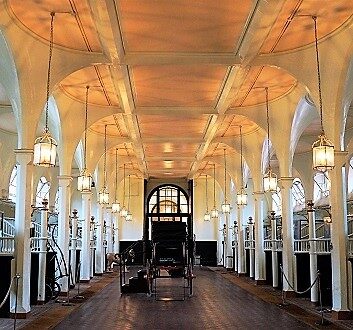
England, London, Royal Mews
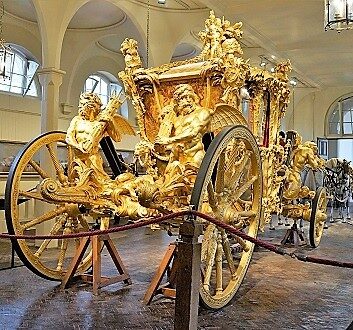
England, London, Royal Mews, Gold State Coach
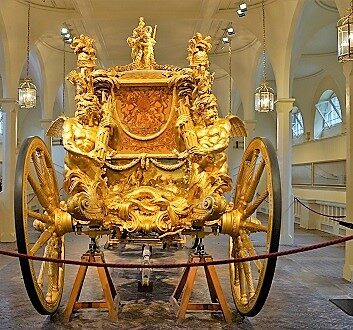
England, London, Royal Mews, Gold State Coach
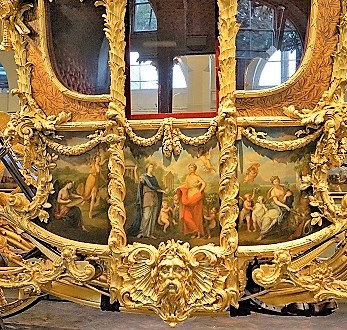
England, London, Royal Mews, Gold State Coach
Favorite Adventures
Royal Mews at Buckingham Palace – The Royal Mews, the working stables at Buckingham Palace, house royal coaches, landaus and horses used as transportation for the Queen and the Royal Family. The Gold State Coach, the most beautiful and opulent royal coach, is reserved for coronations, weddings and grand royal events. The enclosed eight-horse-drawn-carriage was commissioned by George III, designed by architect Sir William Chambers and completed in 1762. The carriage is decorated with stunning gilded carvings and four Tritons (Greek Gods of the Sea) at each corner, symbolizing Britain’s imperial power. The three golden cherubs on the rooftop represent the union of England, Scotland and Ireland. The panels on the carriage were painted by the Italian painter, Giovanni Cipriani. The magnificent Gold State Coach is traditionally drawn by a team of eight Windsor Grey horses. The Royal Mews display various carriages, including Queen Alexandra’s State Coach, the Irish State Coach, the Scottish State Coach originally built in 1830 and the Glass Coach, used for the coronation of King George V in 1911. The Royal Mews houses also a collection of official cars, including Rolls-Royces, Bentleys and Daimlers.
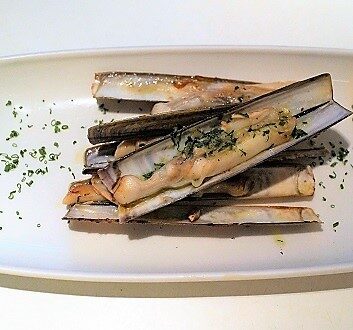
England, London, Donastia Restaurant, Razor Clams
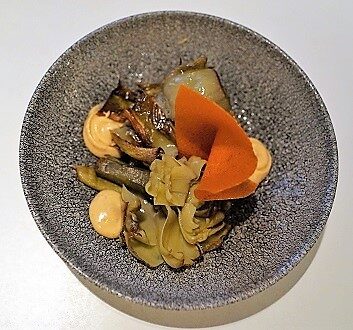
England, London, Donastia Restaurant, Artichoke & Aioli
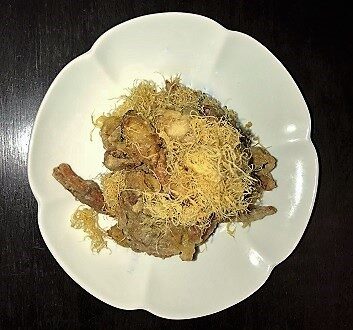
England, London, Hakkasan Restaurant, Golden Fried Soft Shell Crab
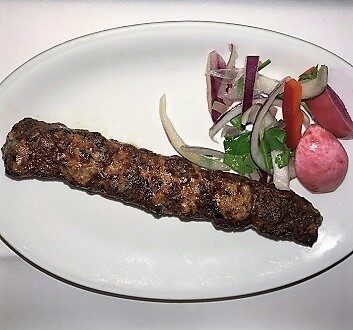
England, London, Noura Restaurant, Kafta
Selected Cuisine
English Cuisine – Centuries of history contributed to a fascinating diversity of the English cuisine. A multi-ethnic culture influenced cooking methods, introduced exotic ingredients and reinvented the English cuisine. Vikings, Romans and French cultivated a European style diet, while the British colonization of India and the Caribbean dramatically changed the English cuisine. London is a thriving metropolis and the epicenter of classic English gastronomy and international cuisine. Fish and Chips, a symbol of classic English food, is usually a battered cod or haddock fish that is deep-fried and served with deep-fried potatoes. The British Roast, traditionally served on Sundays, consists of roasted meat, Yorkshire pudding, roasted potatoes, vegetables, gravy and condiments. The Black Pudding is a blood sausage made with congealed blood, pork fat, oatmeal and spices. An English Afternoon Tea is a quintessential British tradition, consisting of having tea in the afternoon, accompanied by savory and sweet foods. Traditionally, it is reserved for special occasions, served in a formal drawing room between 4:00pm-5:00pm and includes finger sandwiches, freshly baked scones, elegant desserts and a selection of loose leaf teas served in fine china. An Afternoon Tea at the Ritz London is served in the elegant Palm Court and embodies this wonderful British tradition. London, with its array of high-end, fashionable and eclectic restaurants, is a fulcrum of international cuisine and culinary fusion. Donastia (donostia.co.uk) serves a gourmet Spanish cuisine, featuring delicious Basque style tapas. Le Gavroche (le-gavroche.co.uk), a superb French restaurant in the Mayfair district, serves classic French haute cuisine. Smith’s Wapping (smithsrestaurants.com/smiths-wapping) offers lovely views of the Thames River and serves a superb seafood cuisine. Hakkasan Hanway (hakkasan.com/hanway-place) is an upmarket Chinese restaurant serving decadent Cantonese food. Chez Antoinette (chezantoinette.co.uk/stjames-victoria), situated behind Victoria Street and near St. James Park, prepares a lovely French cuisine. Noura (noura.co.uk/belgravia), located within a walking distance to Buckingham Palace, serves a scrumptious classic Lebanese cuisine. Santini Restaurant (santinirestaurant.com), situated in the Belgravia neighborhood, serves a classic Italian cuisine.
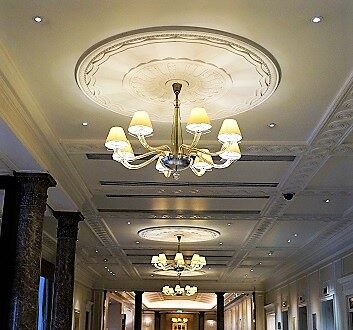
England, London, Hyatt Regency London - The Churchill
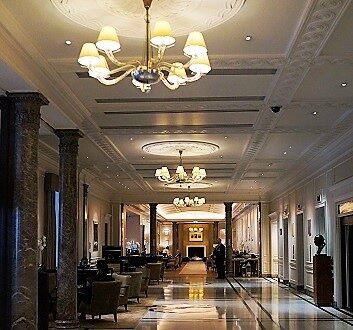
England, London, Hyatt Regency London - The Churchill
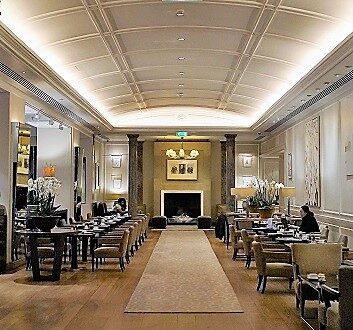
England, London, Hyatt Regency London - The Churchill
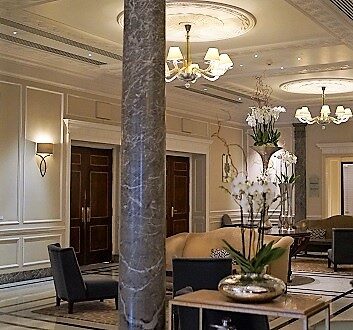
England, London, Hyatt Regency London - The Churchill
Preferred Accommodations
Hyatt Regency London - The Churchill – Located in the fashionable Marylebone neighborhood, the Hyatt Regency London – The Churchill epitomizes luxury, sophistication and style. A collection of elegant suites and rooms with club access showcase a classic British décor. The Churchill Bar & Terrace, the Montagu Kitchen and the Locanda Locatelli are excellent dining venues. The nearby Portman Square Garden and Hyde Park are beautiful and tranquil places to enjoy. The Hyatt Regency London – The Churchill is an ideal base to discover London’s iconic landmarks and cultural sites, and tour the English countryside.
